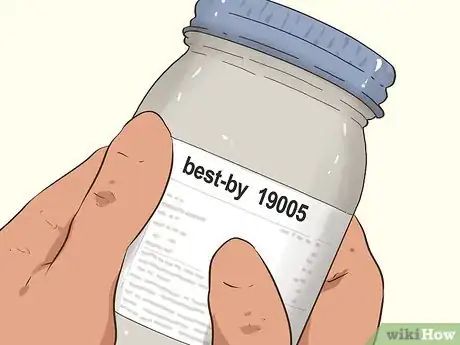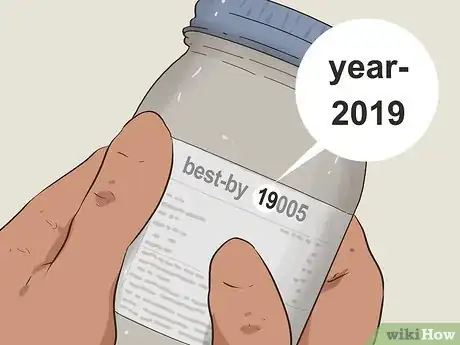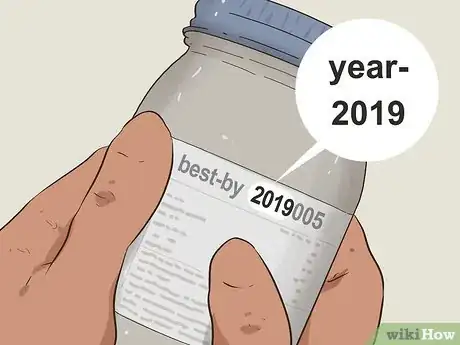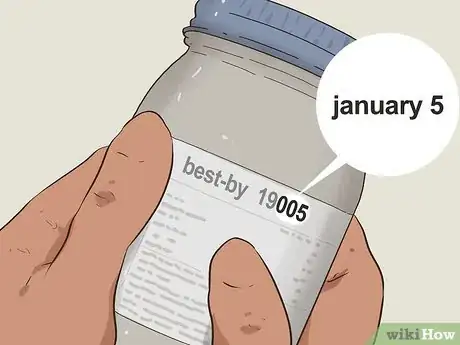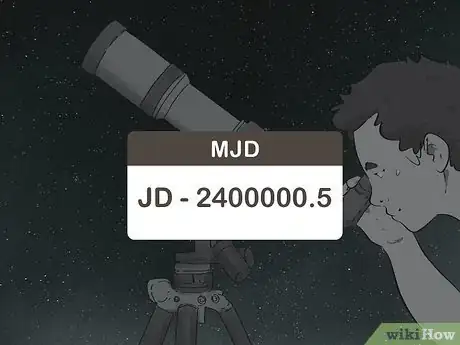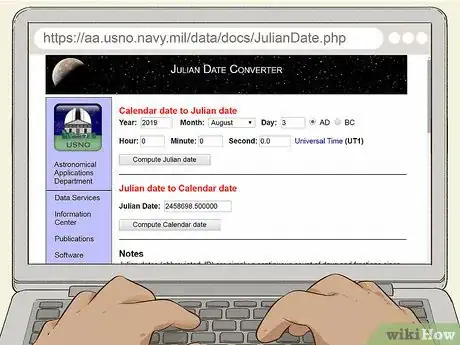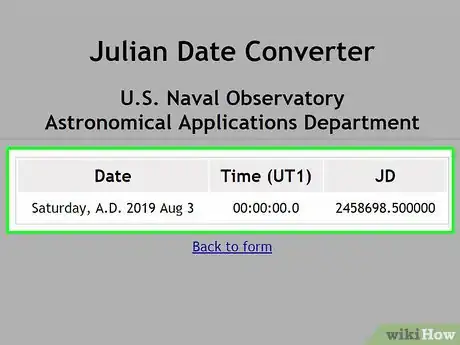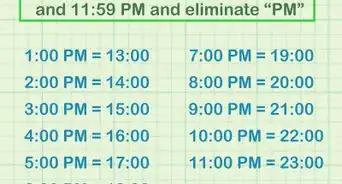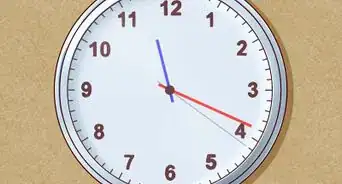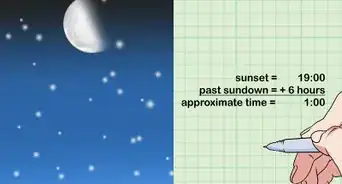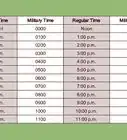This article was co-authored by wikiHow Staff. Our trained team of editors and researchers validate articles for accuracy and comprehensiveness. wikiHow's Content Management Team carefully monitors the work from our editorial staff to ensure that each article is backed by trusted research and meets our high quality standards.
This article has been viewed 114,838 times.
Learn more...
Julian dates (JD) are a continuous count of days since noon Universal Time on January 1, 4713 BC. Astronomers often use Julian dates as a standardized form of timekeeping. Food manufacturers also sometimes use JD, though their dates are calculated differently. JD aren’t very intuitive to understand for those of us used to the Gregorian calendar, so there are a few tricks to reading them. Since JD are written in different ways depending on the context, make sure you are using the method that fits which kind of JD you have in front of you.
Steps
Reading JD on Packaged Food
-
1Locate the 3-7 digit number stamped on your food. Packaged food items sometimes have “Julian Dates” stamped on them that represent the packing date. These dates are 3-7 digits long, and are calculated differently from JD used in astronomy.[1]
- Common locations for these numbers include the sides of cartons or the bottom of cans.
- If your packaged food has a "best-by" date, it should be displayed in a normal calendar format, rather than a Julian date, so you don't need to bother converting anything.[2]
-
2Find the year by looking at the first 2 digits if the number is 5 digits long. For example, if it’s a 5-digit number and the first 2 digits are 16, then that corresponds to 2016. If the number is only 3 digits long, on a more perishable item, such as eggs, you can assume it was packed in the current year.[3]Advertisement
-
3Find the year from the first 4 digits if the number has 7 digits. Some JD will show the full year in 4 digits for added clarity. For example, if it’s a 7 digit number and the first 4 digits are 1997, then that corresponds to 1997.[4]
-
4Convert the last 3 digits to the calendar day. The last 3 digits refer to the day of packaging, counting up from January 1 as 001. They represent the consecutive days of the year. You can convert to Gregorian calendar using this chart, but make sure to take into account whether or not you are in a leap year: https://www.scp.byu.edu/docs/doychart.html.[5]
- For example, if the JD was 17234, then the year would be 2017, which is not a leap year, so 234 corresponds to the day August 22, 2017.
- If the JD was 2000107, then the year is 2000, which is a leap year, so the date would be April 16, 2000.
Reading a JD in Astronomy
-
1Figure out if it’s a JD in astronomy. When an astronomer reports a sighting, they often report this information in a Julian Date, rather than using a Gregorian calendar date and the time of day. If you’re trying to read a weird-looking date from the back of a can, check out the first method instead. The current Julian date in is about 2500000, so if it’s close to that, that’s a good tip off, too.
- If it says MJD next to the number, it’s a modified Julian date, which is related by the formula MJD = JD - 2400000.5
-
2Look up an online tool that converts from JD to Gregorian calendar date. Converting from JD to Gregorian is quite complicated. If you did it by hand, you would have to take into account leap years, conversions between different calendars, and time zones, so it is best to use a program that already takes into account these factors to avoid mistakes.
- Make sure you are using a calculator from a reputable site.
-
3Type in the Julian date and the computer will do the work for you. Simply enter the Julian number into the box that says JD. The astronomers or military officers who wrote up the computer program took into account all the tricky time changes between now and January 1, 4713, so you can trust their hard work.[6]
- For example, if you typed in the Julian Date 2435000, it would convert to 12:0:0.00 UT on September 14, 1954.
-
4Convert from Universal Time to your time zone. Universal time, also known as Greenwich Mean Time, may not be your time zone. Depending on your time zone, you will have to subtract a certain number of hours from the UT.
- For example, 12:00 UT would be 5 am Pacific Standard Time and 8 am Eastern Standard Time.
Community Q&A
Did you know you can get answers researched by wikiHow Staff?
Unlock staff-researched answers by supporting wikiHow
-
QuestionWhat is the Julian date and how is it calculated?
 wikiHow Staff EditorThis answer was written by one of our trained team of researchers who validated it for accuracy and comprehensiveness.
wikiHow Staff EditorThis answer was written by one of our trained team of researchers who validated it for accuracy and comprehensiveness.
Staff Answer wikiHow Staff EditorStaff AnswerA Julian date is a count of the number of days that have elapsed since noon on January 1, 4137 BC. It’s calculated by adding up all the full days that have passed since that date, then adding any additional elapsed hours, minutes, and seconds in a decimal format. The date is based on a cyclical period of 7980 years, so the next Julian period would begin in AD 3268, at which point the count would be reset.
wikiHow Staff EditorStaff AnswerA Julian date is a count of the number of days that have elapsed since noon on January 1, 4137 BC. It’s calculated by adding up all the full days that have passed since that date, then adding any additional elapsed hours, minutes, and seconds in a decimal format. The date is based on a cyclical period of 7980 years, so the next Julian period would begin in AD 3268, at which point the count would be reset. -
QuestionHow do you convert a Julian date to a Gregorian date?
 wikiHow Staff EditorThis answer was written by one of our trained team of researchers who validated it for accuracy and comprehensiveness.
wikiHow Staff EditorThis answer was written by one of our trained team of researchers who validated it for accuracy and comprehensiveness.
Staff Answer wikiHow Staff EditorStaff Answer
wikiHow Staff EditorStaff Answer -
QuestionHow many digits are in a Julian date?
 wikiHow Staff EditorThis answer was written by one of our trained team of researchers who validated it for accuracy and comprehensiveness.
wikiHow Staff EditorThis answer was written by one of our trained team of researchers who validated it for accuracy and comprehensiveness.
Staff Answer wikiHow Staff EditorStaff Answer
wikiHow Staff EditorStaff Answer
References
- ↑ https://food.unl.edu/cracking-date-code-egg-cartons
- ↑ https://www.fsis.usda.gov/wps/portal/fsis/topics/food-safety-education/get-answers/food-safety-fact-sheets/food-labeling/food-product-dating/food-product-dating
- ↑ https://food.unl.edu/cracking-date-code-egg-cartons
- ↑ https://www.ibm.com/support/knowledgecenter/en/SSBQNK_2.1.0/topics/cvtdecjulian.html
- ↑ https://www.scp.byu.edu/docs/doychart.html
- ↑ https://www.aavso.org/jd-calculator
